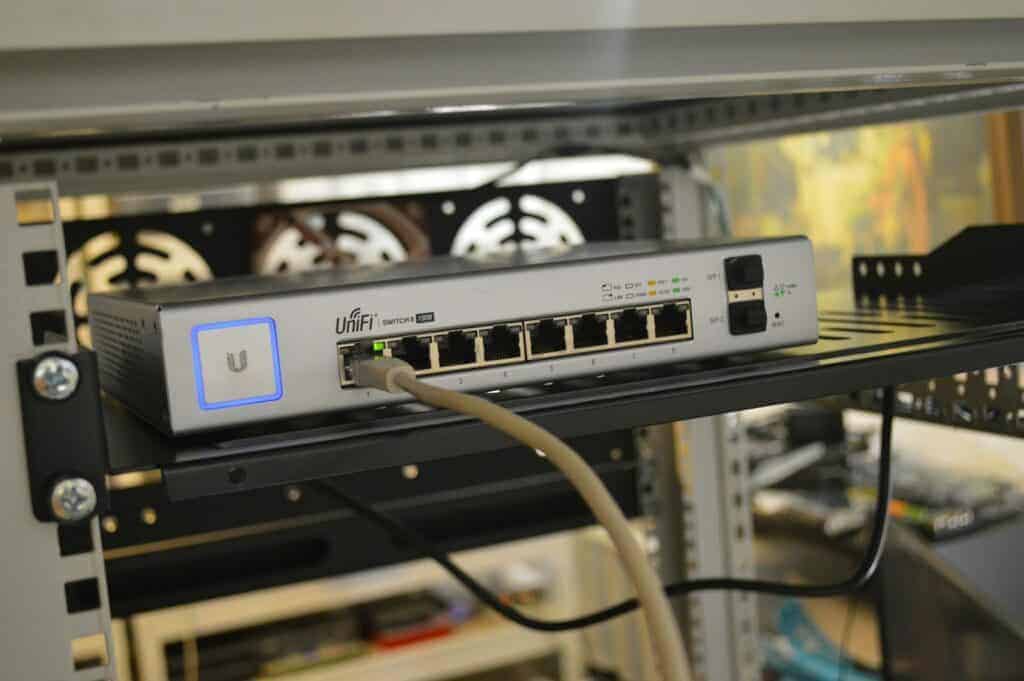A network switch connects devices within a local area network (LAN). It forwards data to specific devices rather than broadcasting it to all connected devices. This ensures efficient and fast communication within the network. A reliable and efficient Ethernet switch can make all the difference when it comes to network speed, uptime, and stability. Whether you’re setting up a home network, expanding your office infrastructure, or powering PoE devices, the right switch ensures seamless connectivity and optimal performance. This guide presents a curated selection of top-rated Ethernet switches catering to various needs and budgets.
From budget-friendly options to feature-rich managed switches, there’s a perfect fit for everyone. Remember to consider factors like the number of ports, speed, PoE support, and management capabilities when making your choice. Network switches come in various types, such as unmanaged and managed switches, each serving different needs. Unmanaged switches are simple to set up and use, while managed switches offer advanced features for larger networks. They help in expanding the number of devices that can be connected through Ethernet ports.
Using a network switch enhances the functionality of a network. It improves data transfer speeds and reduces network congestion, making it an essential tool for both home and business networks.

Power Up Your Network: Top-Rated Ethernet Switches for Every Need
Best Overall: NETGEAR 8-Port Gigabit Ethernet Unmanaged Switch (GS108)
This switch strikes a balance between performance, affordability, and reliability, making it suitable for most home and small office setups. Its sturdy metal construction, plug-and-play setup, and energy-efficient design add to its appeal.
Best Budget: TP-Link 8-Port Gigabit Ethernet Unmanaged Switch (TL-SG108)
If you’re on a tight budget, the TP-Link TL-SG108 is a fantastic option. It offers reliable Gigabit speeds, an energy-efficient design, and a lifetime warranty, all at a very affordable price.
Best for Home Networks: Linksys SE3008 8-Port Gigabit Ethernet Switch
The Linksys SE3008 delivers fast Gigabit speeds, simple plug-and-play setup, and basic Quality of Service (QoS) features, making it ideal for expanding your home network and handling bandwidth-intensive tasks.
Best with Power over Ethernet (PoE): TRENDnet TEG-S80g 8-Port Gigabit PoE+ Switch
For powering devices like IP cameras and wireless access points, the TRENDnet TEG-S80g is an excellent choice. It offers eight Gigabit PoE+ ports, delivering both data and power over a single Ethernet cable.
Best for Advanced Users: Ubiquiti UniFi Switch 8 (US-8)
If you need more control and advanced features, the Ubiquiti UniFi Switch 8 is a powerful managed switch. It offers Layer 2 switching, PoE support, and seamless integration with the UniFi Network Controller for centralized management.
Feature Comparison
| Switch | Ports | Price | Key Features | Ideal for |
|---|---|---|---|---|
| NETGEAR GS108 | 8 | $$ | Gigabit speeds, plug-and-play, energy-efficient | Home & small office |
| TP-Link TL-SG108 | 8 | $ | Gigabit speeds, energy-efficient, lifetime warranty | Budget-conscious users |
| Linksys SE3008 | 8 | $$ | Gigabit speeds, plug-and-play, basic QoS | Home networks |
| TRENDnet TEG-S80g | 8 | $$$ | Gigabit speeds, 8 PoE+ ports | Powering PoE devices |
| Ubiquiti UniFi Switch 8 | 8 | $$$$ | Layer 2 switching, PoE, UniFi Network Controller integration | Advanced users, larger networks |
Unraveling the Network Switch: Types, Connections, and Functions
Types of Network Switches
Network switches come in various types, each catering to specific needs and network sizes:
- Unmanaged Switches: These basic switches offer plug-and-play connectivity without requiring configuration. They’re ideal for small home networks or simple office setups.
- Managed Switches: These offer greater control and customization. Network administrators can configure VLANs, prioritize traffic, and monitor network performance. They’re suitable for larger networks with more complex requirements.
- Smart Switches: These combine the ease of unmanaged switches with some of the features of managed switches, such as basic QoS and VLAN support. They are a good choice for small to medium-sized businesses seeking some level of control without the complexity of full management.
- Layer 2 Switches: These operate at the data link layer of the OSI model, forwarding data based on MAC addresses. They are the most common type of switch and are used for connecting devices within a local network.
- Layer 3 Switches: These operate at the network layer of the OSI model, forwarding data based on IP addresses. They are more sophisticated than layer 2 switches and can perform routing functions.
Types of Connections
Network switches offer various port types to connect different devices:
- Ethernet Ports: These are the most common type of port, used to connect devices like computers, printers, and servers using Ethernet cables.
- SFP/SFP+ Ports: These are small form-factor pluggable ports used for fiber optic connections. They offer higher speeds and longer distances than Ethernet cables.
- PoE (Power over Ethernet) Ports: These ports can provide power to devices like IP phones and wireless access points through the Ethernet cable, eliminating the need for separate power adapters.
Key Functions of Network Switches
- Data Forwarding: Switches receive data packets from one device and forward them to the intended recipient device on the network.
- MAC Address Learning: Switches learn the MAC addresses of connected devices and create a MAC address table to optimize data forwarding.
- Loop Prevention: Switches use the Spanning Tree Protocol (STP) to prevent loops in the network, which can cause broadcast storms and disrupt traffic flow.
- VLAN Support: Managed and smart switches can create virtual LANs (VLANs) to segment the network into smaller, more manageable groups.
- Quality of Service (QoS): Switches can prioritize certain types of traffic, such as voice or video, to ensure smooth communication.
| Switch Type | Description | Best for |
|---|---|---|
| Unmanaged Switch | Basic, plug-and-play connectivity, no configuration required. | Small home networks, simple office setups |
| Managed Switch | Offers greater control and customization, network administrators can configure VLANs, prioritize traffic, etc. | Larger networks with more complex requirements |
| Smart Switch | Combines ease of use with some features of managed switches. | Small to medium-sized businesses seeking some control |
| Layer 2 Switch | Operates at data link layer, forwards data based on MAC addresses. | Connecting devices within a local network |
| Layer 3 Switch | Operates at network layer, forwards data based on IP addresses. | Larger networks requiring routing functions |
Network switches are the backbone of modern networks, connecting devices and enabling data communication. Understanding the different types of switches, connections, and their functions is crucial for building and maintaining an efficient and reliable network infrastructure.
Key Takeaways
- Network switches connect devices within a LAN.
- There are unmanaged and managed switches for different needs.
- They improve data transfer speeds and reduce network congestion.
Fundamentals of Network Switching
Network switches connect devices on a computer network by using packet switching to receive, process, and forward data to its destination. Key components include the types of switches and how they operate, as well as their impact on network performance.
Network Switch Types
Switches come in different types, each with specific functions. Unmanaged switches are simple devices that don’t require configuration. They’re ideal for small networks. Managed switches, on the other hand, allow users to manage, configure, and monitor them, making them suitable for larger networks. Smart switches offer some management capabilities but not as extensive as fully managed ones. Stackable switches can be connected to form a single logical unit, helping to simplify management and expand network capacity.
Switch Operation Principles
Switch operation is based on the Layer 2 and Layer 3 of the OSI model. At Layer 2, switches use MAC addresses to forward data packets to the correct devices. This is efficient for creating VLANs and reducing network congestion. Layer 3 switches combine switching and routing functions, enabling them to handle more complex tasks and improve network performance. Switches maintain MAC address tables to ensure data is sent to the right destination without unnecessary broadcasting, optimizing bandwidth usage.
Connectivity and Performance
Switches play a crucial role in the connectivity and performance of a network. Ethernet ports on switches provide connections for various devices like computers and printers. Gigabit Ethernet ports offer high-speed data transfer, vital for modern applications. Power Over Ethernet (PoE) allows switches to power devices like IP cameras through the Ethernet cable, simplifying installations. The choice of Ethernet cables (such as Cat5e, Cat6) affects network speed and latency. Latency and bandwidth are key factors in ensuring network efficiency and optimization, making proper switch configuration essential for achieving peak performance.
Frequently Asked Questions
Network switches help manage data flow between devices in a network. They improve speed and security compared to older, simpler devices like hubs.
How does a network switch facilitate data transmission within a network?
A network switch directs data packets to the correct device instead of sending it to all devices on the network. This makes communication faster and avoids unnecessary data traffic.
What distinguishes a network switch from a hub?
A hub broadcasts data to all devices on the network, but a switch only sends data to the intended device. This makes switches more efficient and secure.
Can network switches interconnect distinct networks?
Network switches can connect different segments within a single network. To connect distinct networks, devices like routers are usually required.
What are the primary functions of network switches in a computing environment?
Network switches connect multiple devices, like computers and printers, within a local area network (LAN). They help in managing data transfer, ensuring efficient and secure communication.
What are the different categories of switches used in computer networks?
Switches can be unmanaged, managed, or smart. Unmanaged switches are simple and basic. Managed switches offer more control, including monitoring. Smart switches fall between unmanaged and managed, offering some level of management.
How does a network switch differ from a router in terms of functionality?
A switch connects devices within the same network to communicate. A router connects different networks and directs data between them. While routers manage traffic between networks, switches manage traffic within a network.







